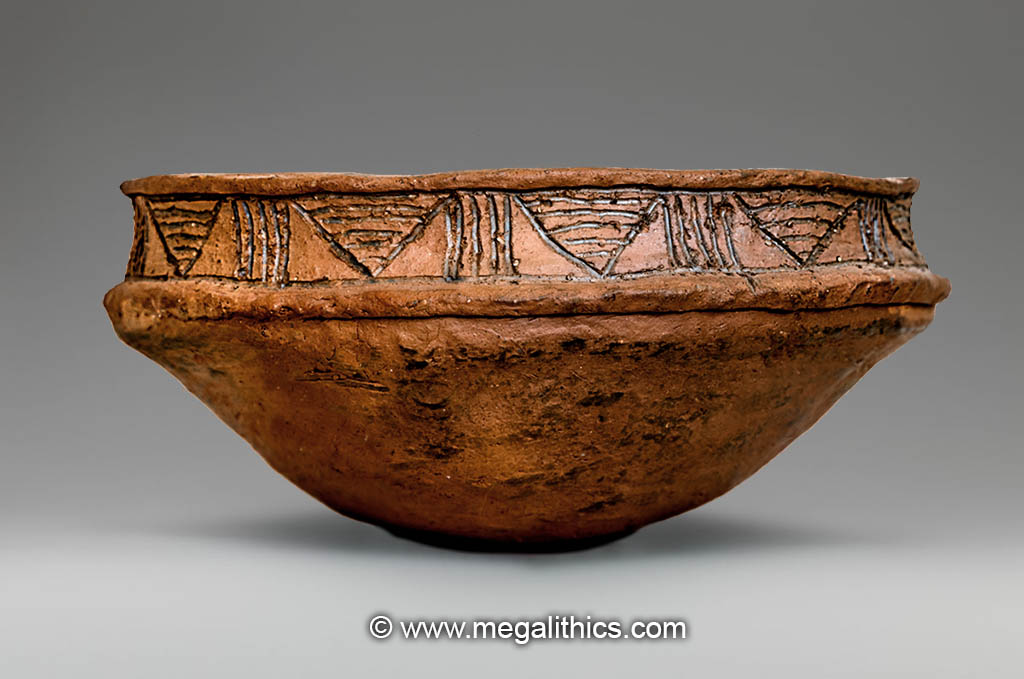

As all of the
original Unstan ware finds were broken and partial, here is a photo of our own intact Unstan bowl from
Orkney.
A reproduction of course, but made on Orkney and hand-moulded. The originals would have been
fired in directly in wood fires,
not a modern kiln,
so they would have a darker tone from the smoke and ash.
Originally thought
to have been exclusively used for funerary purposes, Unstan ware has more
recently been found in several
domestic settings such as the Knap of Howar farmhouse on Papa Westray. Perhaps
it mainly being found in cairns is due
to enhanced preservation in those settings, rather than a large bias toward its
selective use in them.
There is a theory
that two distinct cultures may have coexisted on Orkney during the tomb building
period. One tradition having
Unstan ware pottery and placing its dead in Orkney-Cromarty cairns, the other
employing Grooved ware pottery and utilising
Maes Howe chambered tombs as its funerary monuments. The distributions of the
pottery and tomb types on the Orkney islands
do partially support this idea, but it is by no means definite.
Here are illustrations of some of the original finds from Unstan shown in Clouston's paper (1) describing his excavation.
Note the frequent
use of parallel slanted lines in the decoration on the bowls. The stones of the
outer casing of the cairn
at Unstan were laid in a slanted way, this is thought to have been a decorative
feature and may echo the motifs
seen on the pottery found within.
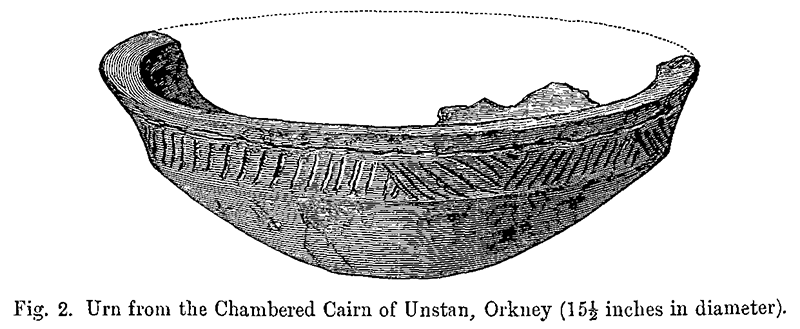
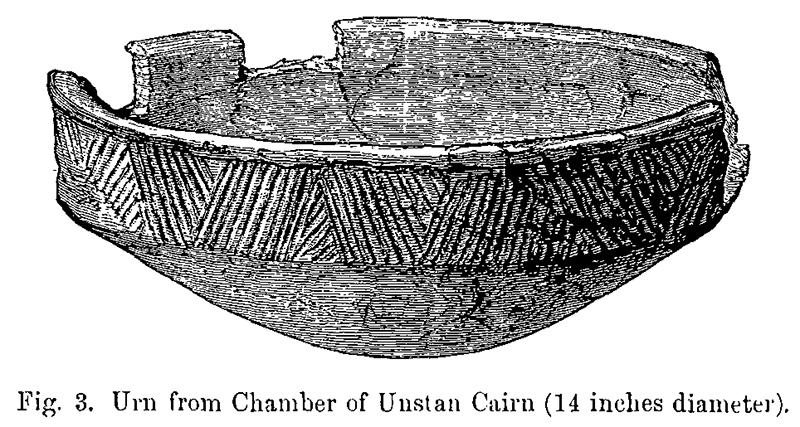
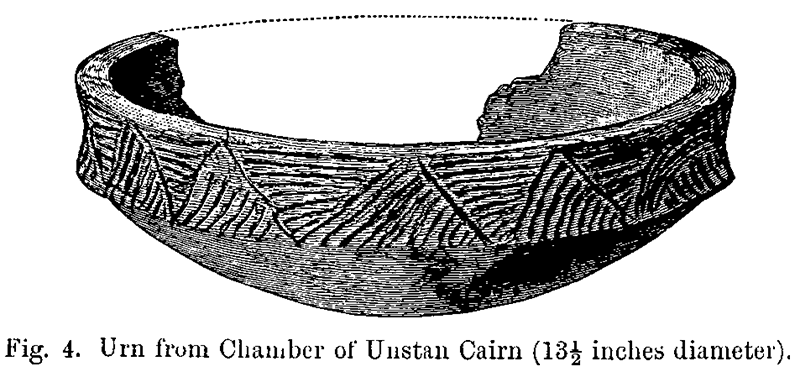
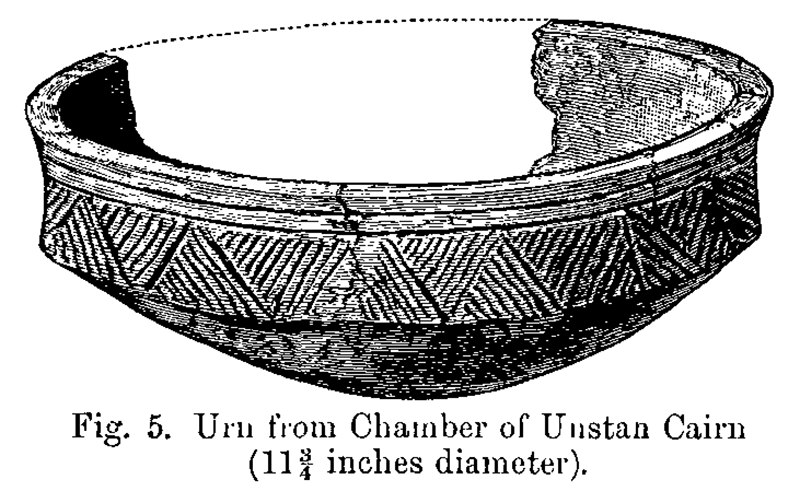
Although the majority of sherds recovered were from characteristic Unstan bowls, some fragments of a plainer form were found.
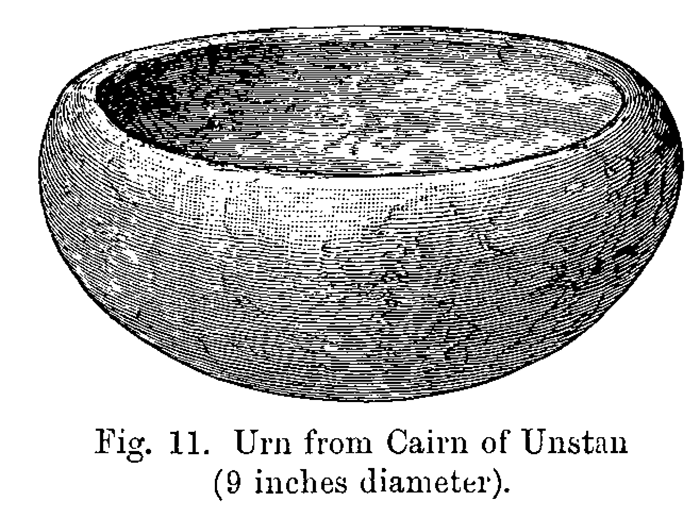
1. Clouston, R.S., Proceedings of the Society of Antiquaries of Scotland, 19, p.341-51,1884.
As usual, our sincere thanks to the Society for allowing use of material from its most excellent Proceedings.